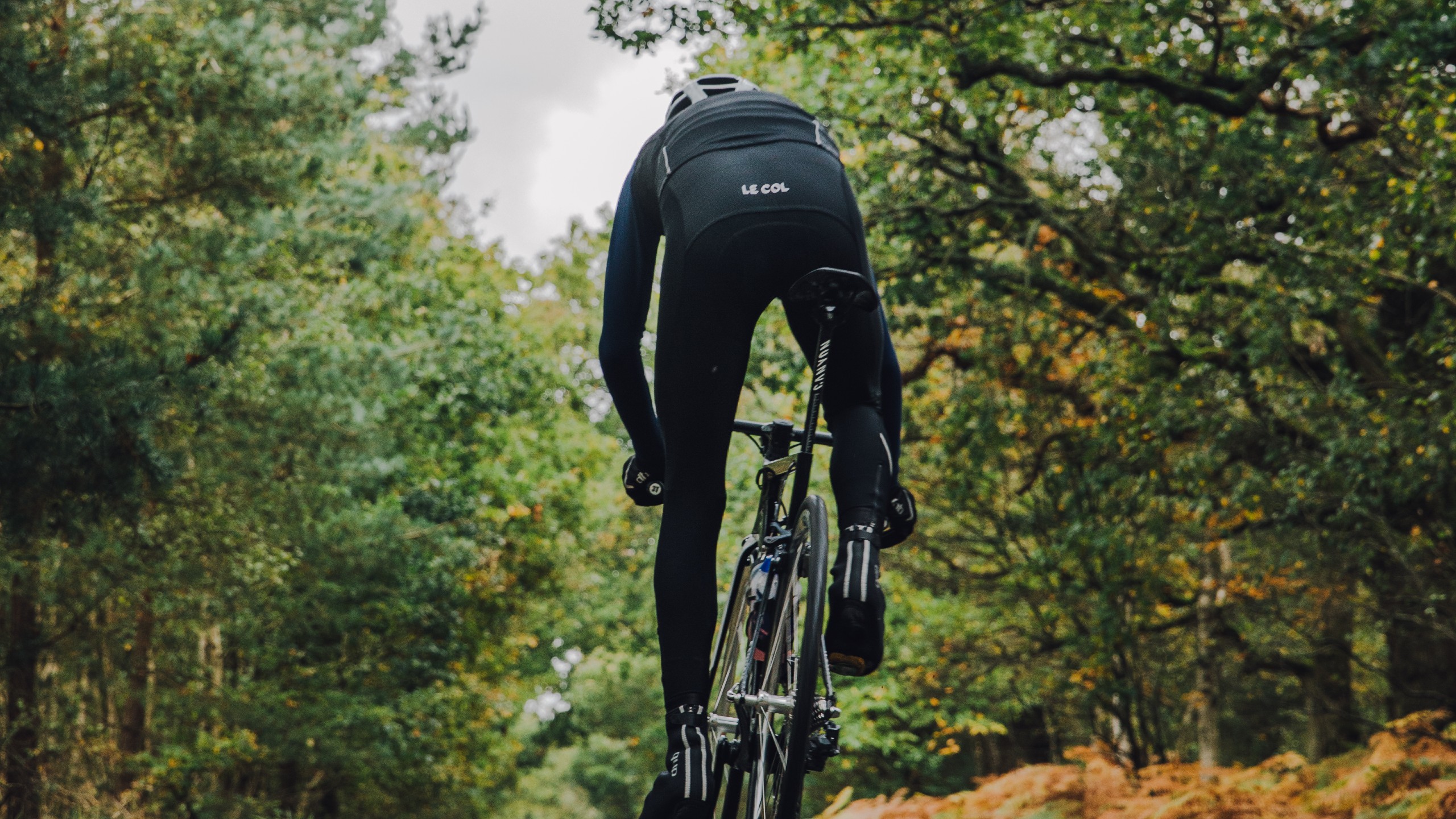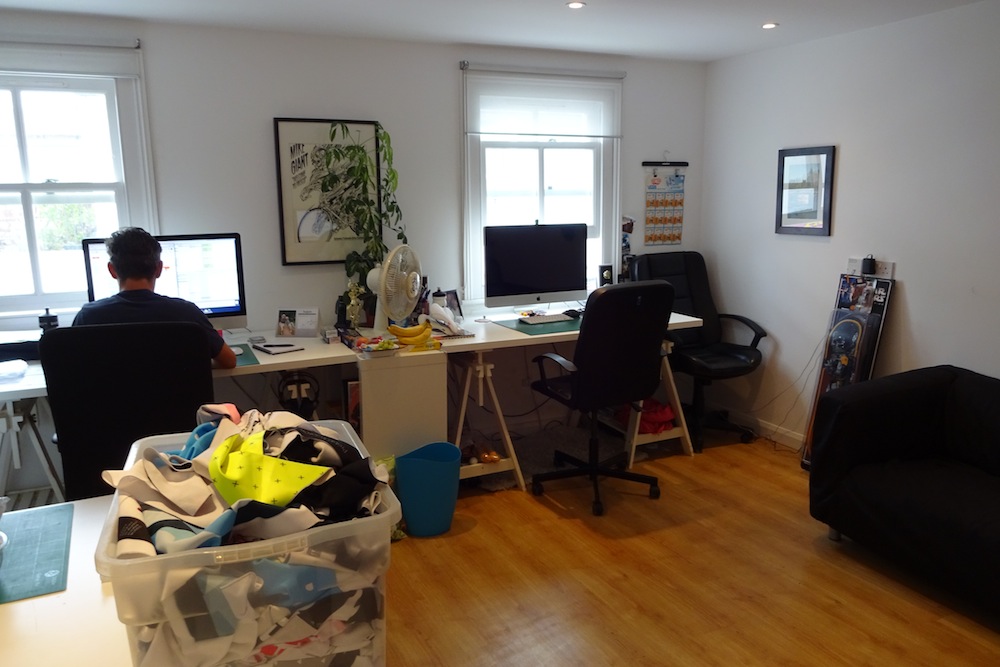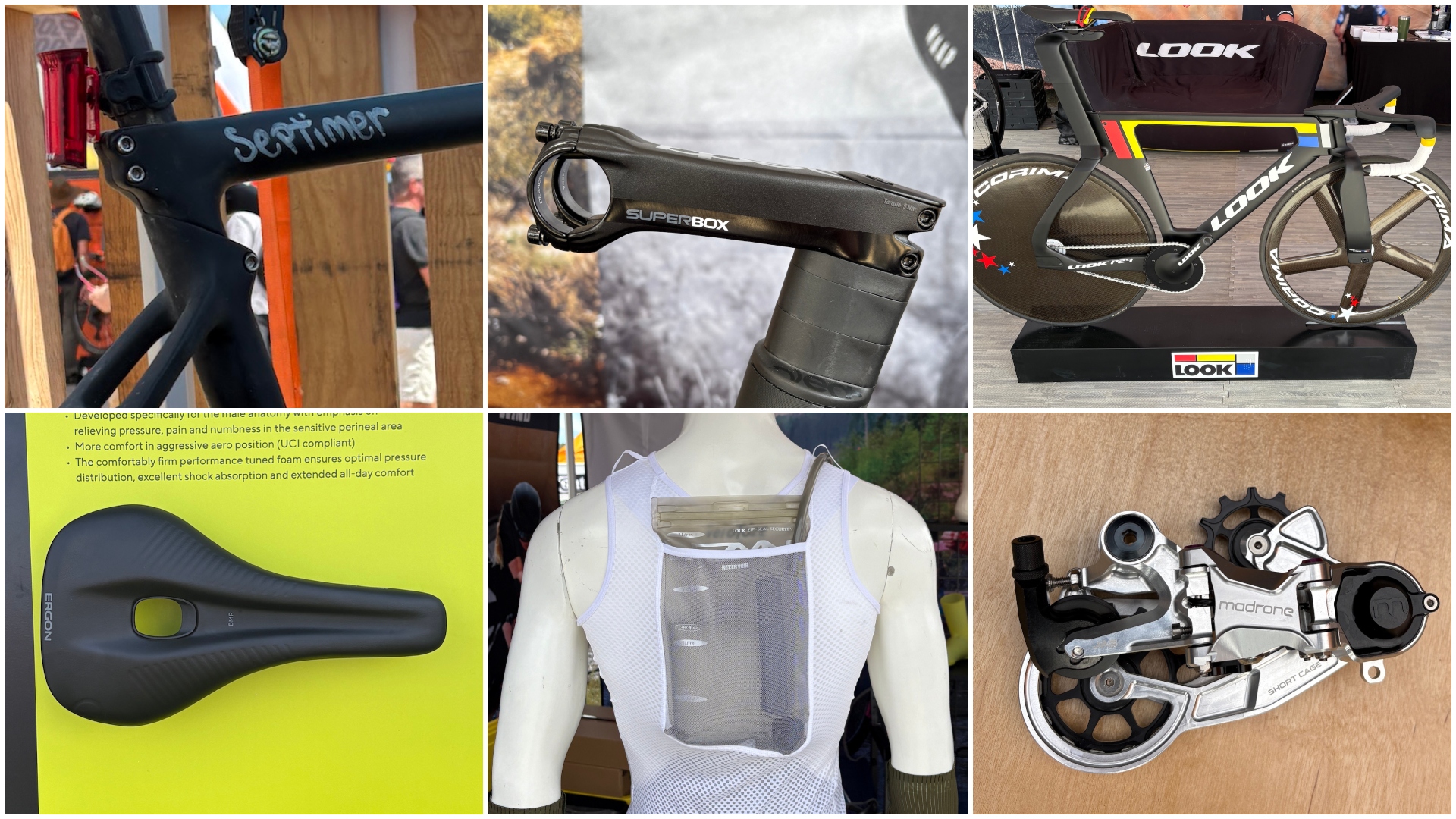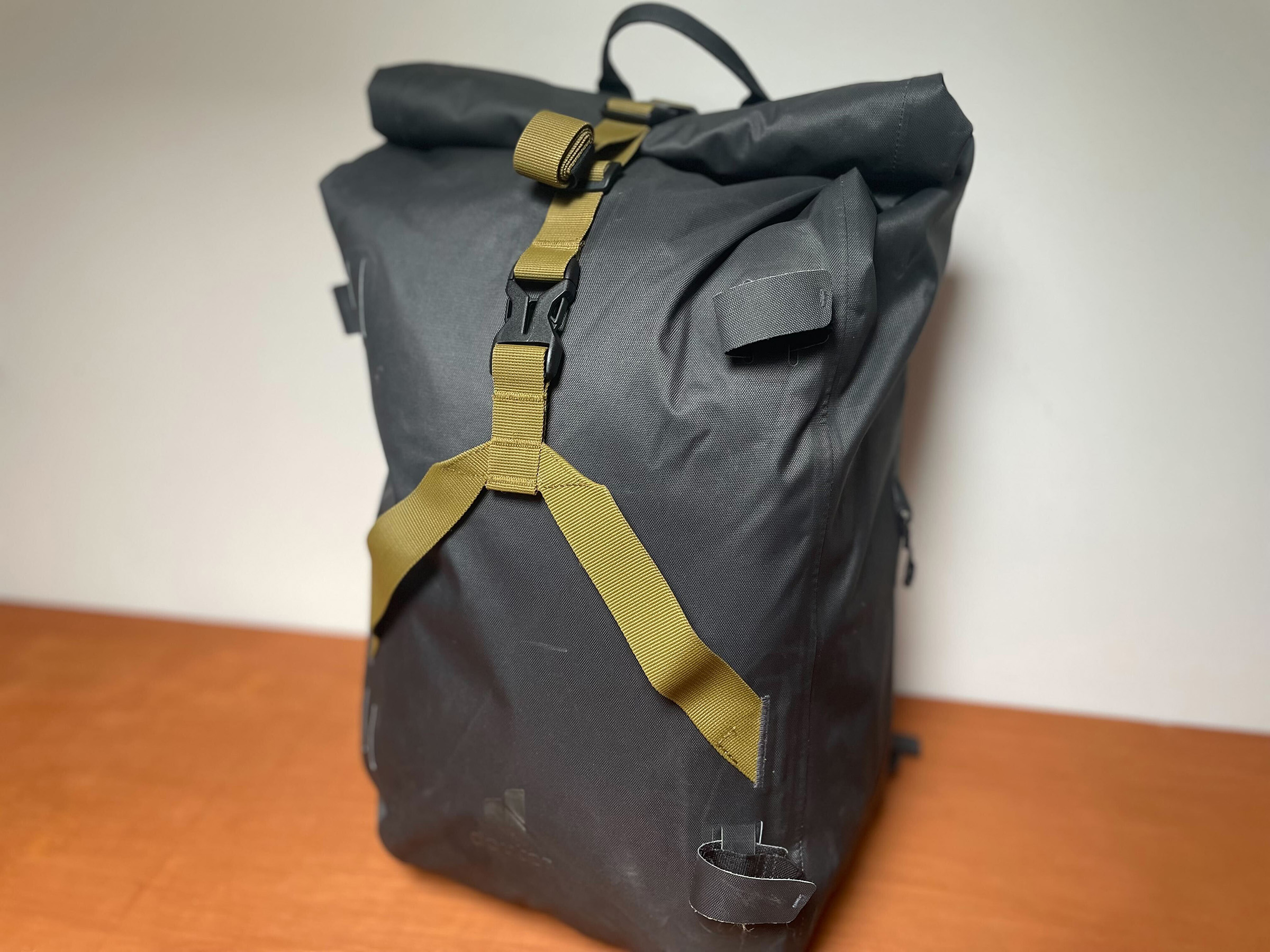Glutes 'not firing'?: How to make the most of the biggest muscle in your body
Sedentary lifestyles, poor posture and overtraining can all lead to ineffective use of your backside


Your gluteus maximus is, as suggested by its name, the largest muscle in your body. It's crucial to providing powerful pedal strokes.
The maximus is aided by the gluteus medius and gluteus minimus, which provide stability and help to control muscle contractions.
Unfortunately, it's very common for this excellent muscle group to under-perform, leading to a loss of power and even injury.
My physio says my 'glutes aren't firing' - what does this mean?
Cyclists are often told by physiotherapists that their 'glutes aren't firing'. This can sound rather vague to the patient, which can be frustrating. But, what does this actually mean?
The issue of underperforming glute muscles is endemic amongst cyclists and runners who work at prominently desk based jobs, effectively sending their derrières to sleep for eight hours of the day before asking them to return to being the strongest muscle of the body for a few hours at a time.
A common result is that the hamstrings begin to overwork, the lower back becomes tired and sore, or knee pain presents itself as the joint isn’t being properly supported by its power base.
“The glutes are the biggest muscles in your body, so if you use them you’re more of an engine. But the muscle group also needs to be working correctly to prevent injury, because it stabilises the hip, and can prevent problems like ‘runners knee’ and ITB issues,” says Nichola Roberts of Velo Physio.
Get The Leadout Newsletter
The latest race content, interviews, features, reviews and expert buying guides, direct to your inbox!
We can all squint hard and try to clench our bottoms for 20 seconds at a time but learning to use them to instigate every pedal stroke is not something that happens over night.
Why do glute muscles 'switch off'?
Lazy glutes are very common amongst office based workers who are physically active outside of business hours.
“It’s not that desk work weakens the muscle, but it does mean it’s underused for a lot of the day which does become a factor,” explains Roberts.

Osteopath at AMG Osteo Clinics, Alice Monger-Godfrey adds: “Working at a desk compresses your spine when you’re slumped. The back muscles are forced to overwork and the glutes become lazy so you get a complete mismatch. We're going from two extremes - sedentary to asking a lot of them."
In terms of the working day, Roberts recommends stand up desks, whilst Monger-Godfrey is a big fan of using a gym ball as a chair, which encourages constant core engagement, as well as standing up and walking around every 20-minutes.
How to tell if your 'glutes aren’t firing'
The diagnosis of ‘lazy glutes’, ‘glutes not firing’ and other variations of the same often comes from a physiotherapist, osteopath, trainer or coach. But how does an expert arrive at this diagnosis?
“It's very individual. But I usually have someone lie on their front and get them to push both legs to the side. Often one buttock will raise above the other and overpower it, so you’re looking at how quickly they recruit, whether they recruit together and which one lasts longer,” former-pro cyclist Monger-Godfrey explains.
Of course, assessment needs to be focused on the individual - a trained professional will be able to pinpoint which of the three glute muscles is 'firing', and how well the group is working together.
Monger-Godfrey also points out that the failure of a muscle to do its job may not be a lack of strength – but could be down to fatigue.
“There’s times when the glutes are over working, and become tired, which makes them appear that they’re weak – I probably see that more. To determine if that’s the issue, you’ve got to be honest with yourself - look at your training load, especially if you're adding gym work. Are you resting enough? Are you over-training?”
Combatting lazy glutes
Stretching the glutes
If you fall into the category of simply having a huge amount of fatigue built up in your backside, then stretching and massage are key to injury provention.
“Stretching is so paramount – hip openers, knee hugs that keep the pelvis stable and allow for internal and external rotation to really open up the hip joint are so important, and stretching out the buttock muscles,” suggests Monger-Godfrey.
The pigeon stretch detailed in the video below is a great glute reliever, which also targets the IT band and piriformis.
When it comes to massage, foam rolling is a form of self-myofascial release (‘myo’ referring to muscle and ‘fascia’ being the connective tissue) which can help - but you can really target the area with a tennis or even lacrosse ball.

Foam rolling exercises: glutes
“The lacrosse ball is my favourite, as tennis balls deform. It’s not about putting all your body weight on to it, and rolling - instead place the ball under your pelvis and let your leg fall out to the side, so you get a gentle, passive stretch," says Roberts.
Strengthening the glutes
If you’re not feeling much tightness or fatigue in your glutes after a ride, but know they’re not doing all they can to drive you forwards, then adopting a strength programme is the name of the game.
A post shared by Michelle Arthurs-Brennan (@ridewriterepeat)
A photo posted by on
There are many commonly prescribed exercises, and Roberts says she’s seen many a frustrated patient. One such culprit is the 'clam', where you lie on one side, with your knees bent and feet together, lifting one leg up to form a triangle, repeating reps before moving on to the other side.
“I see people who have been doing all the glute exercises, but say they don’t do anything. You [need to] do glute exercises that are specific to cycling to get that transfer of exercises to function.”
“So as an example, clams, are not effective. Cycling is a push down exercises. At no point do we rotate - which is what a clam exercise is.
“Do the things you’ll do on the bike – like a high step up, but in a forward lean, driving forward and up to engage the glutes. Or try moving from a lunge and bringing the leg up to a standing position. Bulgarian split squats [pictured below] are good, again in a pelvic forward position so you’re really getting the glutes to fire.”
Monger-Godfrey suggests visual feedback: “In the gym, try doing exercises in front of the mirror. You can see when the glutes work, as you’ll see the buttocks clench. And look to ensure you’re putting weight through both legs, often you might lean more on one side, which will mean you’re making that glute work harder.”
She also suggests body weight exercises, like squats and planks which are “symmetrical” and use more stabilising muscles throughout the entire body.
“When you want to increase power, you use your glutes, but you also use upper body and core strength. You’re a whole machine on the bike. So the focus does need to be on glutes and leg strength, but also the whole body. Things like planks help overall strength without over working one set muscle group,” she says.
Roberts is a fan of plyometrics such as box jumps, for the same reason “your approach needs to be holistic, all over body strength is important,” she says.
All of this advice has certainly rung true for myself. As an individual with a touch of hypermobility, in past years I've picked up everything from piraformis syndrome/sciatica to knee pain. Generally, people who are 'more flexible than would be ideal' need a stronger core in order to stabilise themselves.
Having spend over six months working on overall strength in small group classes at Surrey Strength and Performance I can certainly vouch for the difference made by completing the right exercises - for me a mix of split squats, plyometrics and upper body work like pull ups - under the watchful eye of a coach.
I've picked up notably less injuries over the course of this race season as a result of having a stronger trunk (which includes the glutes), and seen some gains in short efforts.
Using bike fit to activate bum muscles
Whilst working at a desk certainly doesn’t help the situation, Roberts is keen to point out that proper bike fit can go a long way to redressing the issue.

“If you’re in a good position, your pelvis will be tilted – which means you have to activate your core, that stabilises your body, which allows you to push through the hips - which means you generally generate power from the glutes,” she explains.
“Saddles are very key, particularly in women. If a saddle is uncomfortable, people will naturally rotate backwards – but on a race bike, to activate your glutes you need to be able to rotate forwards.”
“Flexibility needs to be maintained, too – if your spine is quite stiff, for example you spend all day bent over a laptop and don’t stretch, you won’t be able to achieve that rotated position.”
Even your cycling shoes can have an impact: “When you push down through your foot, you then get a co-contraction of your glute, But if someone has a thick insole or badly fitting shoe, sometimes it means they lose that activation.”
Being conscious of glute muscles as you ride
Whilst stretching, strengthening and bike fit are all important, both experts suggest that a large part of the process of learning to properly recruit that bum muscle is neurological.
On the bike, Monger-Godfrey – who raced as a professional cyclist herself before beginning a career in osteopathy, says: “Try really sitting back, deep into the saddle, and dropping your heel. Say to yourself ‘engage the glute’ and you realise a lot of the time you’re not using them.
"Pushing a bigger gear, getting out the saddle and hill reps all engage the glutes too,” she adds.
“A lot of it is focusing the brain, working on the brain and body relationship makes a big difference. It’s something you need to gradually do – and hopefully if you do it in training, eventually it will become habitual and engaging the glutes to recruit power becomes the norm.
“You can even put a reminder on your headset. I remember when I was racing, it was one of the biggest things that coaches told me and it made a big difference.”
One commonly suggested approach to getting the bum muscles working on the bike is to perform 'activation' exercises - bridges and bodyweight squats - before settling on the saddle, to "switch on" the muscles.
Roberts comments: "Most cyclists are riding for hours, so activation exercises before a ride won't make much difference. They could be good if you're doing a short event - like a time trial or criterium race."

Thank you for reading 20 articles this month* Join now for unlimited access
Enjoy your first month for just £1 / $1 / €1
*Read 5 free articles per month without a subscription

Join now for unlimited access
Try first month for just £1 / $1 / €1
Michelle Arthurs-Brennan the Editor of Cycling Weekly website. An NCTJ qualified traditional journalist by trade, Michelle began her career working for local newspapers. She's worked within the cycling industry since 2012, and joined the Cycling Weekly team in 2017, having previously been Editor at Total Women's Cycling. Prior to welcoming her first daughter in 2022, Michelle raced on the road, track, and in time trials, and still rides as much as she can - albeit a fair proportion indoors, for now.
Michelle is on maternity leave from April 2025 until spring 2026.
-
 The Sea Otter Classic: sights and sounds from the biggest bike gathering in North America - Part 1
The Sea Otter Classic: sights and sounds from the biggest bike gathering in North America - Part 1Odds and ends that run the gamut, from a $13,000 frameset to armoured kit and new hydro-vests
By Tyler Boucher Published
-
 Deuter's 30ltr commuter backpack
Deuter's 30ltr commuter backpackA rolltop bag to fit a change of clothes and a sandwich. And keep them dry
By Simon Richardson Published